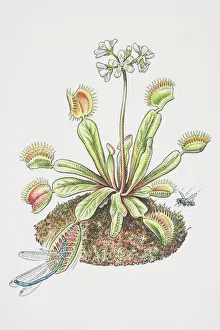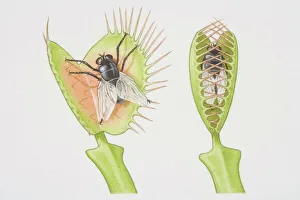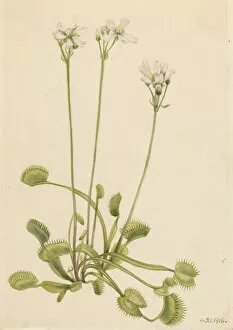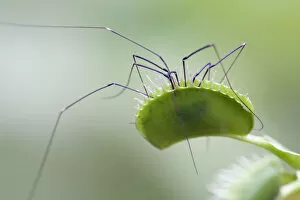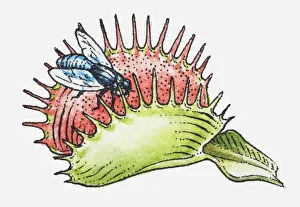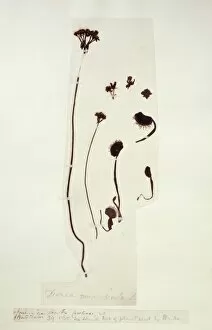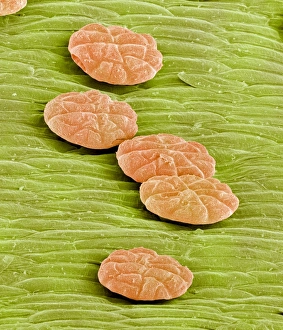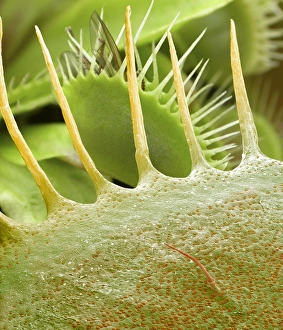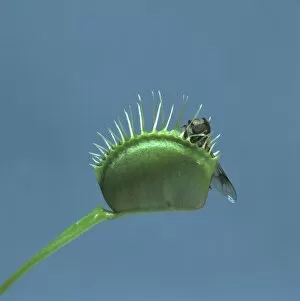Dionaea Muscipula Collection
"Dionaea muscipula: Nature's Cunning Predator" The Venus Fly Trap, scientifically known as Dionaea muscipula
All Professionally Made to Order for Quick Shipping
"Dionaea muscipula: Nature's Cunning Predator" The Venus Fly Trap, scientifically known as Dionaea muscipula, is a fascinating flowering plant that has captivated botanists and nature enthusiasts alike. With its unique ability to capture prey, it truly lives up to its name as a cunning predator. In one captivating scene, a Dragonfly finds itself trapped within the lobes of this extraordinary plant. The intricate mechanism of the Venus Fly Trap allows it to sense the movements of unsuspecting insects and swiftly snap shut, ensnaring its prey. Not far away, a Housefly hovers cautiously near the open jaws of another Venus Fly Trap. It knows all too well the fate that awaits if it ventures too close. These plants have evolved over time to lure in their victims with sweet nectar-like secretions before trapping them for nourishment. A Common Wasp (Vespa vulgaris) also falls victim to the deceptive charms of Dionaea muscipula. This cultivated encounter showcases just how effective these plants are at capturing even larger insects. But it's not just flies and wasps that fall into their clutches; various other species like Sycamore trees, silver firs, foxgloves, prickly pears have been documented as unfortunate meals for these carnivorous wonders. Dating back to 1918, an illustration by Mary Vaux Walcott depicts a fly helplessly stuck on the surface of a Dionaea muscipula leaf. This artwork beautifully captures both the delicate beauty and deadly allure of this intriguing plant. From California's Huntington Library Botanical Gardens comes an enchanting image showcasing a thriving Venus Flytrap amidst lush greenery. Its vibrant colors and intricate structure make it stand out among its surroundings. An 18th-century depiction further highlights humanity's long-standing fascination with this captivating specimen. Even centuries ago, people marveled at its mysterious ways and unparalleled hunting abilities.

